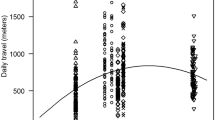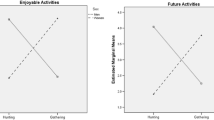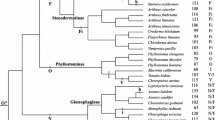Abstract
In 1998, A. Mysterud analysed the relationships between a behavioural parameter (activity time, AT) and body mass and feeding style for 18 temperate ruminants. He found a negative allometric relationship between body mass and AT, and also found a significant effect of feeding style on AT after controlling for body mass. We reanalysed this data set taking into account the effect of phylogeny, and found that while body mass and AT were negatively related, feeding style did not have any effect on AT. We discuss the strong effect that phylogeny has on morphophysiological and behavioural features of ruminants that differ in feeding style, and the lack of evidence to support a feeding style effect.
Similar content being viewed by others
Author information
Authors and Affiliations
Additional information
Received: 16 November 1998 / Accepted: 20 April 1999
Rights and permissions
About this article
Cite this article
Pérez-Barbería, F., Gordon, I. The relative roles of phylogeny, body size and feeding style on the activity time of temperate ruminants: a reanalysis. Oecologia 120, 193–197 (1999). https://doi.org/10.1007/s004420050848
Issue Date:
DOI: https://doi.org/10.1007/s004420050848




